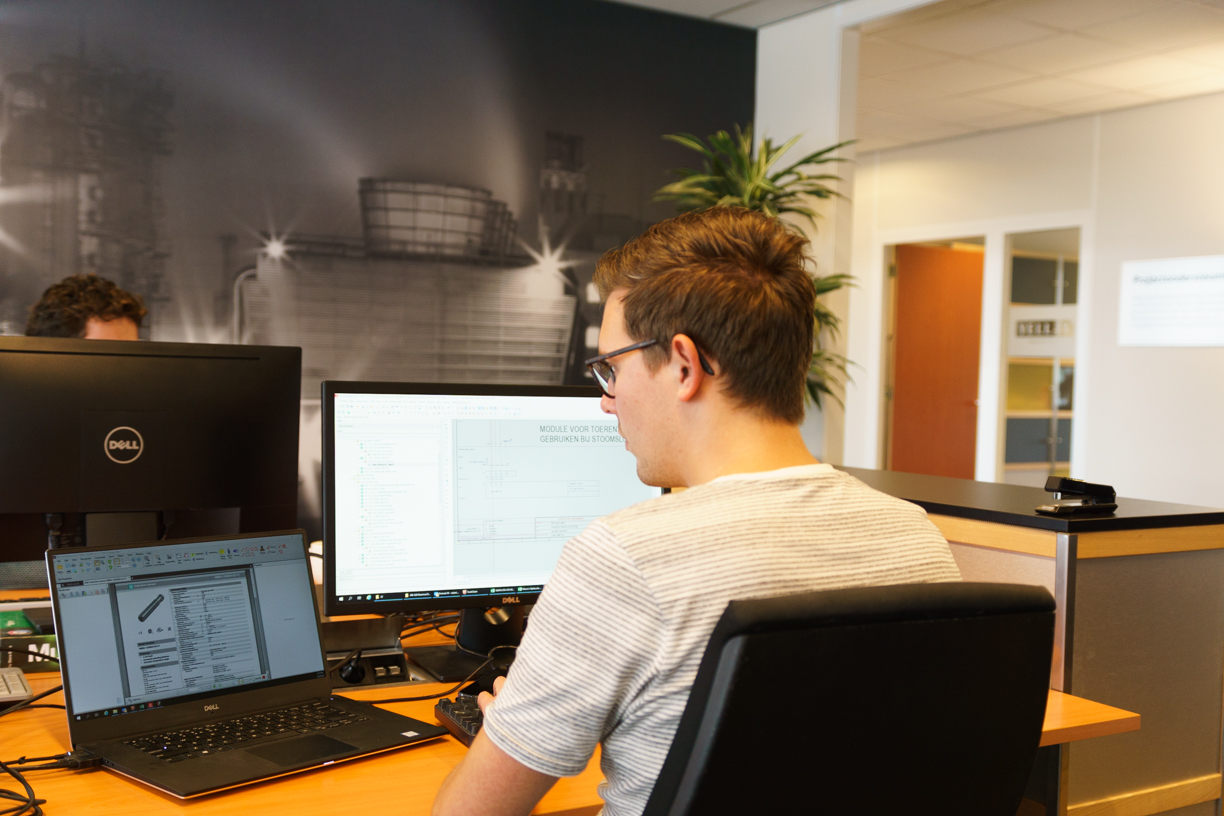Let engineers rediscover their strengths!

24 November 2020
As a project engineer you repeatedly face the same challenge: a new project, a new start. But in practice it’s not always a new start – it’s a repetition of the previous one. The planned project duration is often determined based on experiences from previous similar projects. That also applies to the techniques you will apply.
Particularly when starting a project, you have to make an important decision that determines the course of that project. You’ll have to decide: will I copy and adapt the previous project, or should I generate the project from my managed standard? In practice it’s only a few innovative companies which seem to ask themselves this question. Generally, projects are started by copying a recent one. And that’s a pity.
.
Quick visible result
Why do many organisations start by copying a project? Is it to have results visible quickly in the form of a stack of drawings or PLC software codes? A result that can be a measure of the project’s progress? Perhaps organisations lack overview and must first grow into the project. Then it’s logical that the easiest part is tackled first: the aspects the engineer knows. In this approach, the difficult part is kept until last.
.
Risks of copying
Of course, the dangers inherent in copying an existing project are not new:
- You copy errors along with it;
- At the end of the project you discover that the copied technical version has been (or should be) changed;
- After copying you discover that the chosen solution does not fit best.
These dangers have some adverse effects. The quality is not improved, annoyance and a loss of time ensue, and finally the copied project no longer meets the new project’s wishes and requirements. Copying distracts attention from the as yet unknown items in the project. And it’s precisely for these unknown items that the engineer’s knowledge is desperately needed. The risk is that at the end of the project there will be no more time to find a new item of technology in the solution.
.
The solution
Because engineers are very keen to deliver high-quality work (within the agreed time), switching to generating projects from a ‘managed standard’ offers a solution. A project engineer can then assume that high-quality blocks, macros or other types of building components are available. With a managed standard it’s also possible to describe the most common items in a project easily and quickly, by automatically generating these components. Building parts can be added to the project quickly, removing any associated concerns.
An advantage of generating common building parts is that it leaves more time in the project for new and/or unknown things, and for building parts that have not yet been added to the managed standard. Project engineers create more space within a project to come up with a good and high-quality technical solution for these issues. That’s something from which a project engineer derives energy.
Now that we know that generating projects using a managed standard reduces engineering hours, we also know that these hours can be spent on more creativity in projects. Time is also freed up to keep the managed standard up-to-date and complete. If this is done well, it will be reflected in the quality improvement of the projects. This means that less aftercare is required. So use this space.
The additional advantage is that project engineers rediscover their strengths as engineers. They can be involved in devising and solving technical issues needed to fill in the unknown parts of their project. That means project engineers become real engineers again.
.
Management
However, generating projects is not only a matter for the project engineer, but certainly also for his manager and project leader. The progress of a project can no longer be measured by the number of drawings, PLC software blocks or other types of documents produced. As a project engineer, you start a project by collecting the necessary data and solving technical issues. So no longer by producing documents. After all, with the right data, these can now be generated quickly.
In short: generating projects as opposed to copying them not only result in higher quality and time savings, but also increases engineer satisfaction. After all, engineers can focus on the profession they have chosen and from which they derive their energy. In a market where it’s difficult to find new and well-trained technicians, this is a very welcome side effect.